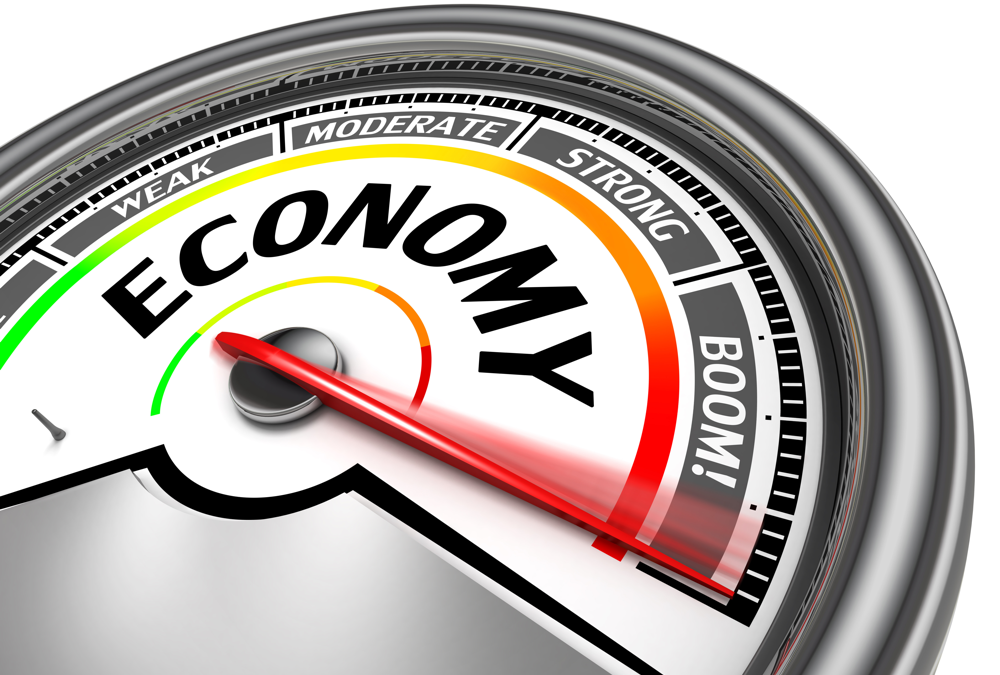While 2020 and much of 2021 will go down in history as the period of the Covid-19 pandemic that challenged modern economies to their core, 2021 and 2022 are also shaping up to be remembered differently, as the years of the Great Boom. Even as global Covid-19 infection numbers rise to a new high, the world’s major economies are starting to rise at a pace at least as fast as anything recorded in the post-World War II era. We are entering a period that might be termed the Great Boom.
The US, China, and Japan are in the early stages of what is promising to be an extended period of above long-term trend GDP growth. Europe is likely to join in from mid-2021. Australia is already among the front-runners of the Great Boom.
At times, annual GDP growth rates will be spectacularly high as economies continue to recover from deep recession in the early stages of the pandemic during the first half of 2020.
China reported Q1 2021 GDP last week showing a lift in annual growth to 18.3% y-o-y from 6.5% in Q4 2020. The US will report Q1 GDP at the end of this month and their annualised quarterly measure will lift above the 4.3% recorded in Q4 2020. US annualised GDP will lift even further in Q2, possibly above 20% annualised pace, when the report is released in late July.
Australia has recorded unprecedented back-to-back 3%+ q-o-q GDP growth (more than 13% annualised US fashion) in Q3 and Q4 2020 taking annual y-o-y GDP growth from –6.3% at the recession trough in Q2 2020 to –1.1% in Q4. If GDP grows close to 2% q-o-q in Q1 2021 annual GDP growth will lift above +1% y-o-y before soaring to 9% y-o-y or higher in Q2. In one year from Q2 2020 to Q2 2021 Australia’s annual GDP growth will lift around fifteen percentage points.
The main force driving the Great Boom has been government stimulus spending on massive scale running above 15% of GDP and still rising in the case of the US and well above 10% of GDP in Australia. Much of that stimulus spending was initially in income support programs for households and businesses. Some of the additional income from government support programs was spent directly boosting household and business spending and contributing to GDP growth. A large amount was also saved. Australia’s household savings ratio jumped to a 40-year high 22% in mid-2020.
While the lift in household savings detracted initially from household spending and GDP growth in Q2 2020, it also provided a big pool of potential spending power as confidence returned about economic prospects. Between Q2 2020 and Q4 2020 the household savings ratio fell ten percentage points to 12% helping to fund strong growth in household consumption spending, the biggest contributor to GDP growth during the period.
The household savings ratio is likely to fall further in 2021, perhaps returning to its pre-pandemic level of 5% or less. Another reduction of at least seven percentage points during 2021 will fund more household spending. It will not be alone driving more household spending. The total amount of wages paid in the economy is rising fast, up 1.5% q-o-q in Q4 2020, mostly driven by rising numbers employed. Even if wage increases remain slow, rising employment means that aggregate wages will be lifting over 1% each quarter during 2020.
Other strong contributions to GDP growth in 2021, apart from household consumption, include spending on housing on a near unstoppable roll fostered by low and stable borrowing interest rates; business investment spending bouncing off a low base and responding to rapidly improving demand; and exports responding to strong prices as the global economy rapidly recovers. In Q4 2020 Australia’s export prices rose 5.5% q-o-q. The Q1 2021 export price index due next week is likely to show a rise of more than 10% q-o-q boosted by higher commodity prices.
Strong Australian GDP growth through much of 2021 is already in the bag because of the key contributors to growth such as household consumption spending, housing activity, business investment spending, employment growth and exports that are all on a near unstoppable roll in the near term. Why strong growth continues into 2022 is based on our view about the outlook for government spending and monetary policy.
The government stimulus spending tap looks set to be turned down but not off. The Government will spend much less on special income support programs such as Job Keeper (what might be termed high-octane stimulus) but it is likely to spend more on lower-octane job skills programs, special needs programs such as age care, infrastructure spending (state government spending is ramping up particularly strongly in 2021 and 2022) and funding income tax cuts. The election cycle with both the Federal and NSW governments due to go to the polls in 2022 also mitigates against a turn towards fiscal consolidation.
Monetary policy will also continue to support growth through this year and much of next year too. The RBA is happy to continue priming a booming economy. The RBA’s view is that the boom will not prime lasting annual inflation until a fully employed economy drives annual wages growth consistently above 4% y-o-y, something the RBA does not expect to see happen before 2024 at earliest.
We disagree with the RBA’s assessment that consistently higher inflation is all about higher wages growth. As we pointed out last week a booming economy can promote conditions that drive up inflation ahead of higher wages growth. Nevertheless, it will take time to prove whether the RBA or we are right about inflation and we do not expect the RBA to change its view this year or much of next year. In that time very easy monetary conditions will support the Great Boom.

